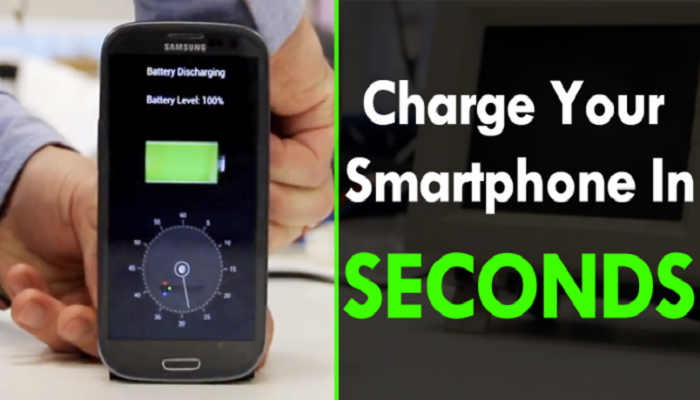
You may soon be able to charge your smartphone within seconds, a novel technology developed by researchers that can significantly improve energy-storage devices known as supercapacitors.
The design doubles the amount of electrical energy the rapid-charging devices can hold, paving the way for eventual use in everything from smartphones and laptops, to electric vehicles and high-powered lasers, researchers said.
“We are showing record numbers for the energy-storage capacity of supercapacitors,” said Michael Pope, professor at the University of Waterloo in Canada.
“And the more energy-dense we can make them, the more batteries we can start displacing,” said Pope, who led the research published in the journal ACS Nano.
Supercapacitors are a promising, green alternative to traditional batteries, with benefits including improved safety and reliability, in addition to much faster charging. However, applications have been limited so far by their relatively low storage capacity, researchers said.
Existing commercial supercapacitors only store enough energy, for example, to power cellphones and laptops for about 10 percent as long as rechargeable batteries.
To boost that capacity, Pope and his colleagues developed a method to coat atomically thin layers of a conductor called graphene with an oily liquid salt in supercapacitor electrodes.
The liquid salt serves as a spacer to separate the thin graphene sheets, preventing them from stacking like pieces of paper. That dramatically increases their exposed surface area, a key to maximising energy-storage capacity.
The liquid salt does double duty as the electrolyte needed to actually store electrical charge, minimising the size and weight of the supercapacitor.
“That is the really cool part of this. It is a clever, elegant design,” Pope said.
The innovation also uses a detergent to reduce the size of the droplets of oily salt – which is combined with water in an emulsion similar to salad dressing – to just a few billionths of a metre, improving their coating action.
The detergent also functions like chemical Velcro to make the droplets stick to the graphene, researchers said.
Increasing the storage capacity of supercapacitors means they can be made small and light enough to replace batteries for more applications, particularly those requiring quick-charge, quick-discharge capabilities, they said.
In the short term, Pope said better supercapacitors could displace lead-acid batteries in traditional vehicles, and be used to capture energy otherwise lost by buses and high-speed trains when they brake.
Although they are unlikely to ever attain the full storage capacity of batteries, supercapacitors have the potential to conveniently and reliably power consumer electronic devices, electric vehicles and systems in remote locations like space, researchers said.
“If they are marketed in the correct ways for the right applications, we will start seeing more and more of them in our everyday lives,” Pope said.

Post Your Comments